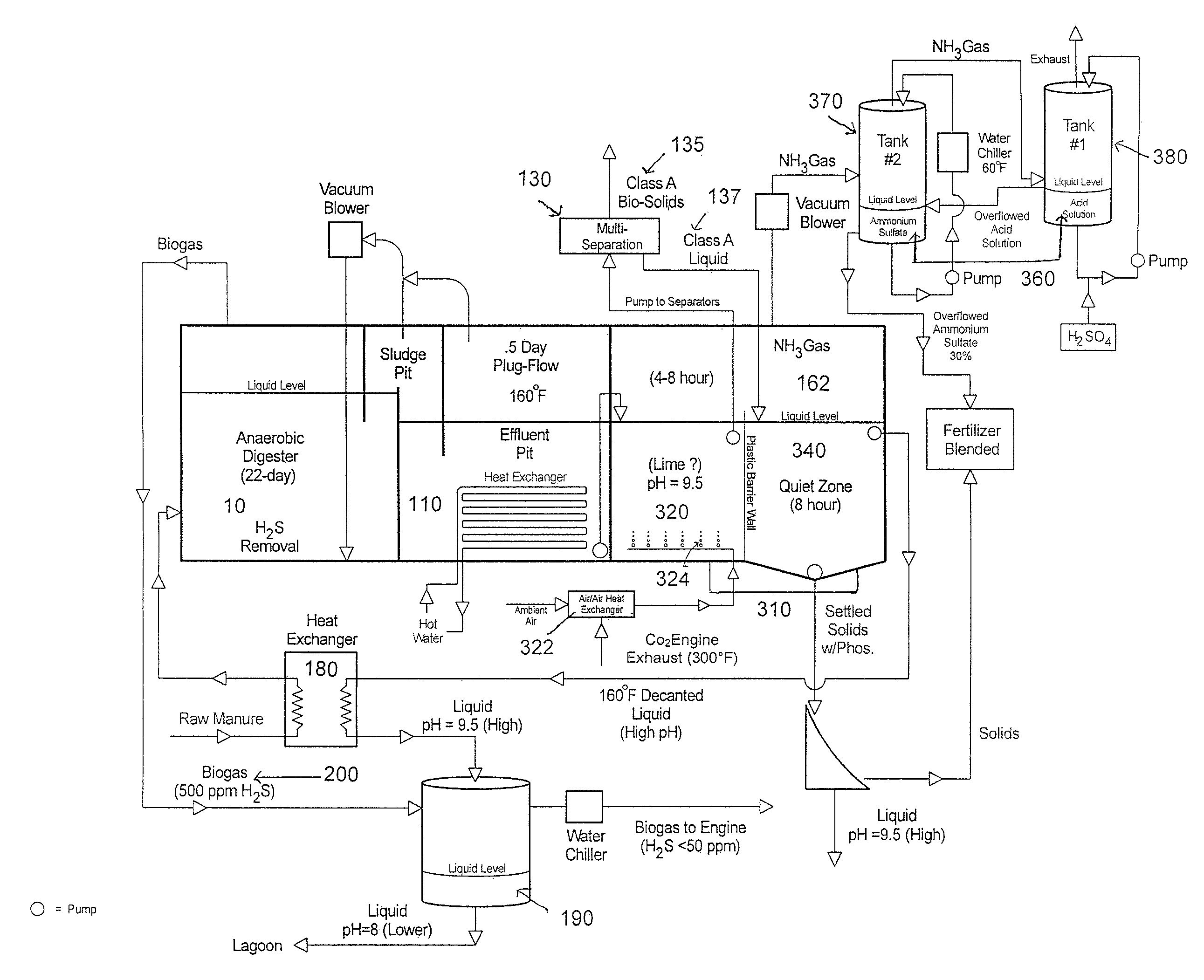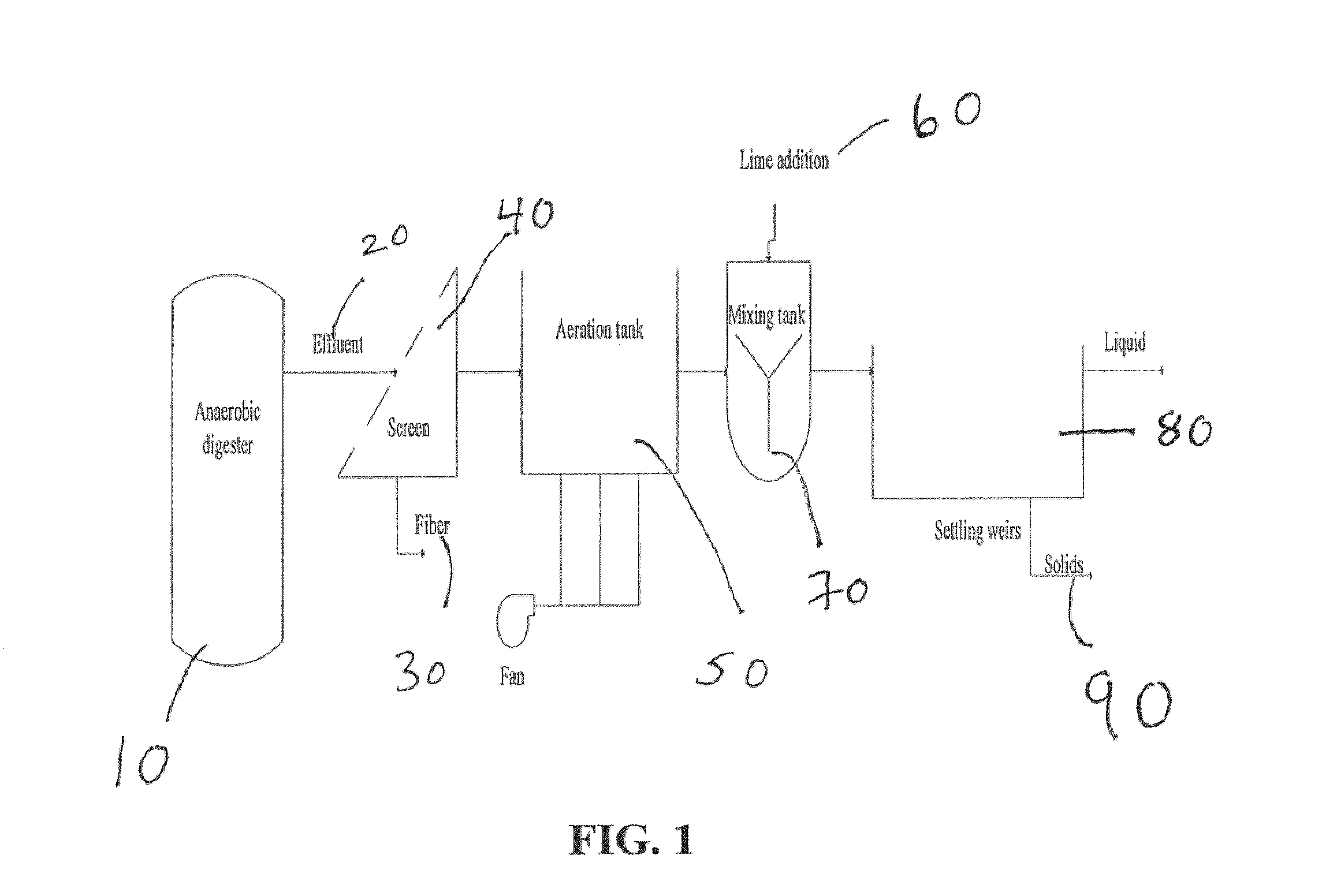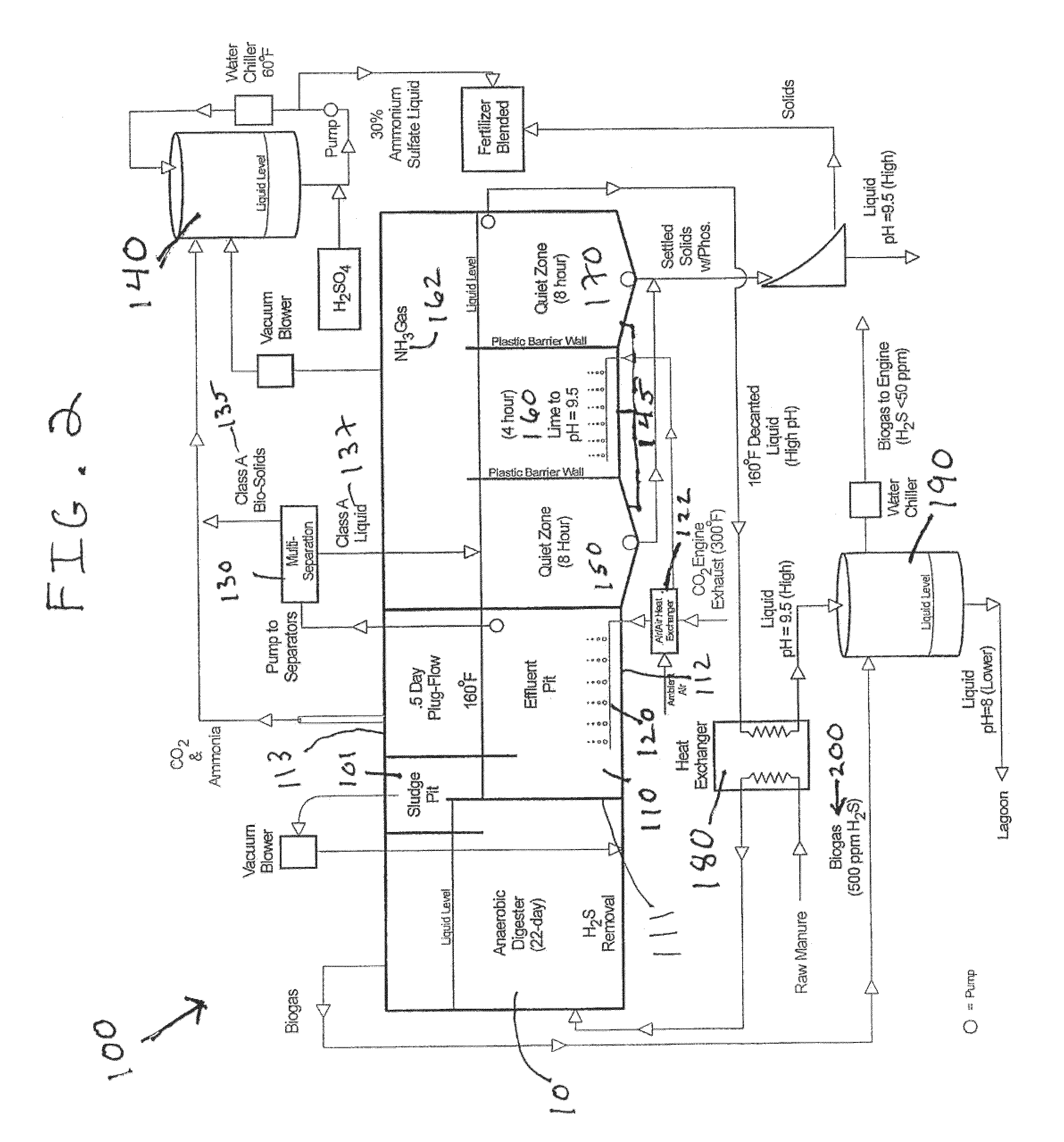Nutrient recovery systems and methods
a technology of nutrient recovery and recovery methods, applied in the field of waste processing systems, can solve the problems of adversely affecting human health, degrading water quality, air quality, and creating serious environmental and human health concerns
- Summary
- Abstract
- Description
- Claims
- Application Information
AI Technical Summary
Benefits of technology
Problems solved by technology
Method used
Image
Examples
example 1
[0282]During anaerobic digestion, significant amounts of CO2 and even some CH4 produced during the biological process can become dissolved and / or super-saturated within the effluent. The CO2 in anaerobic digested effluent becomes supersaturated because the CO2 partial pressure of air is less than that of biogas in the anaerobic digester. These CO2 bubbles are hard to escape from manure because too much suspended solids are contained within. The supersaturated gases interfere with the natural flocculation and settling process. Moreover, the existence of CO2 bubbles in manure utilize a fraction of water to form gas-water layer, which will increase the electrostatic repulsive force of the particles in manure and make the solids even harder to settle down.
[0283]FIG. 5A depicts an image of micro-bubbles within liquid AD effluent, showing that these bubbles occur in numbers high enough to disrupt attractive forces with the buoyant forces and micro-turbulence they induce. The supersaturate...
example 2
[0288]It is believed that during anaerobic digestion significant amounts of CO2 and even some CH4 produced during the biological process can become dissolved and / or super-saturated within the effluent. This is particularly true of CO2 that is stored within the liquid effluent as CO2(aq), H2CO3, bicarbonates and carbonates. Upon release from the digester, changes in temperature, pressure, pH, air and agitation can lead to a release of these super-saturated gases. As the CO2 partial pressure in air is much lower than that inside a digester, a hypothesis was proposed that aeration would remove the dissolved CO2 and enhance P removal. Through aeration, the dissolved CO2 becomes supersaturated.
[0289]Analysis of chemical equilibriums shows that as aeration releases the gaseous CO2, reactions move towards the right, generating more OH− and raising the pH of the solution, especially with elevated solution temperature (FIG. 9A). Subsequent testing of this high temperature aeration process ve...
example 3
[0290]Aeration for pH control and phosphorous-rich solids settling was evaluated at Big Sky Dairy in Goodnig, Id. on a 4,700 cow farm. Table 2 summarizes the laboratory and pilot data obtained using Big Sky manure for the purpose of P-removal and recovery without aims towards ammonia recovery or enhanced temperature treatment. These TP removal rates do not incorporate the TP removed from wastewater due to fiber removal, which can add an additional 5-10% removal.
[0291]
TABLE 2Big Sky laboratory and pilot-scale aeration resultsAerationTPRateTemperatureAeration TimeRemovalgallons / cfm° C.Hours%Big Sky Lab17535570Big Sky Pilot10020753* Each experiment done with 24 hours of settling prior to testing of wastewater liquid TP
[0292]In the laboratory experiments, a final pH of 9.1 was achieved and a TP removal of 70% while the Big Sky Pilot study achieved a pH elevation of 8.7 and a TP removal of 53%. The difference likely is due to the lower aeration rate and the temperature of the manure duri...
PUM
| Property | Measurement | Unit |
|---|---|---|
| time | aaaaa | aaaaa |
| temperature | aaaaa | aaaaa |
| specific gravity | aaaaa | aaaaa |
Abstract
Description
Claims
Application Information
 Login to View More
Login to View More - R&D
- Intellectual Property
- Life Sciences
- Materials
- Tech Scout
- Unparalleled Data Quality
- Higher Quality Content
- 60% Fewer Hallucinations
Browse by: Latest US Patents, China's latest patents, Technical Efficacy Thesaurus, Application Domain, Technology Topic, Popular Technical Reports.
© 2025 PatSnap. All rights reserved.Legal|Privacy policy|Modern Slavery Act Transparency Statement|Sitemap|About US| Contact US: help@patsnap.com



